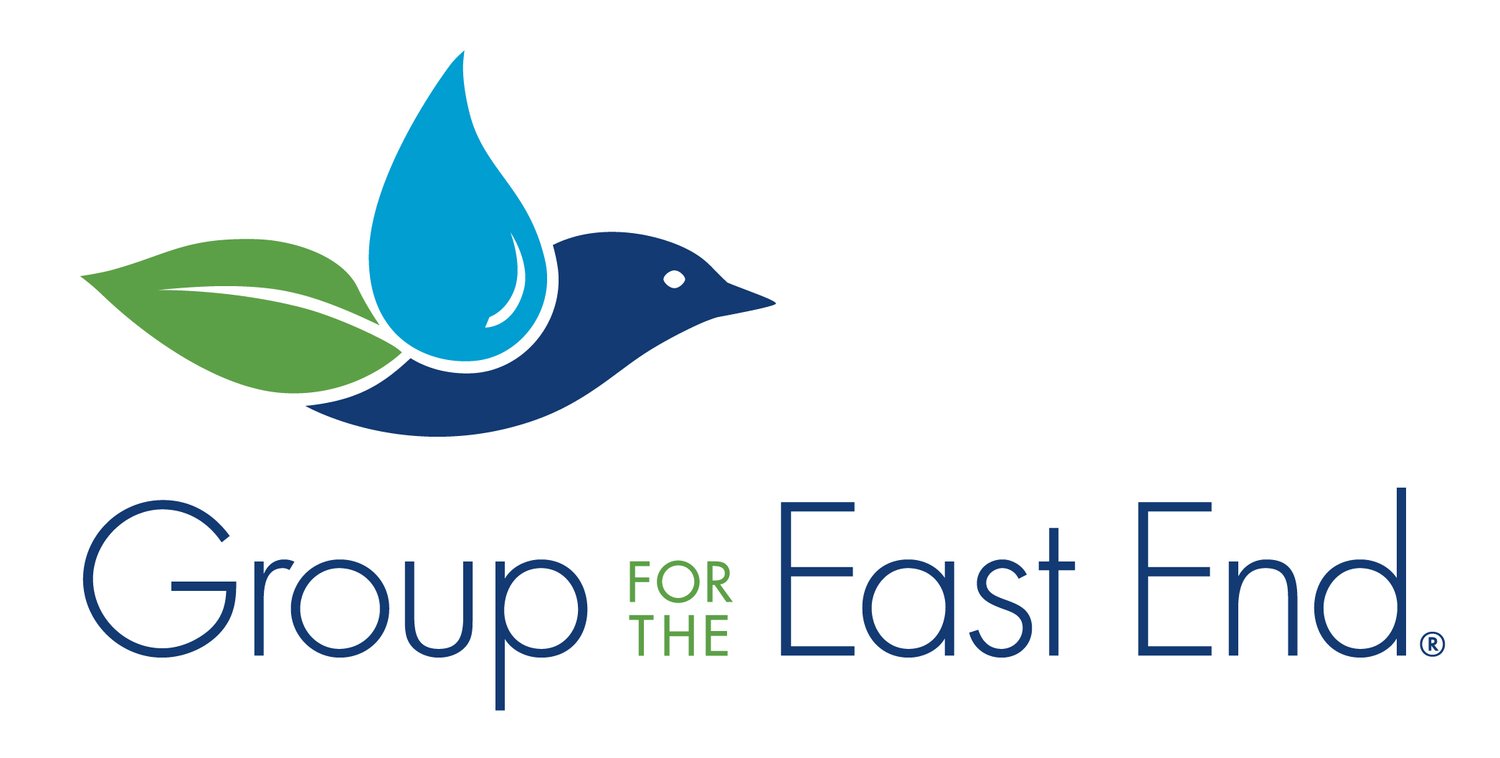Time to Think About Your Garden, Now That You Have the Time...
BY: TARALYNN REYNOLDS, GROUP FOR THE EAST END OUTREACH AND EDUCATION MANAGER
Monarch caterpillar on Butterfly weed, Asclepias tuberosa
Last summer I had an unforeseen amount of time at home, the longest since the days of college breaks, and I used that time to focus on creating a garden that was pleasing to me and supported wildlife. Being able to work in the garden and see life happen, from the emergence of tiny leaflets and insects, to witnessing the entire life cycle of a Monarch butterfly, it became the highlight of my day and something I looked forward to.
I don’t have a lot of space and don’t own my home, so I focused mainly on container gardening with a few species I planted in the ground. Most of what I had was native, but I had been gifted some non-native pollinator plants as well and together they created a tiny sanctuary. I’m a firm believer in the adage, “If you build it, they will come,” as I noticed carpenter bees, Monarch butterflies, Tolype moths, frogs, grasshoppers and more, visit or make a home of their own in my tiny garden. I began to feel a sense of responsibility to these beings and I would check on them daily, sometimes multiple times a day. I know in my everyday life I would not have had that time.
Container garden in bloom
This year, faced again with more time at home, I am looking forward to this time of renewal, the rebirth of all that’s green and colorful and bright, SPRING. As an environmentalist, I try to follow, as much as possible, an ecological gardening concept, which is one that utilizes native plants to support and protect wildlife, no toxic pesticides, preserves water quality and works with nature, not against it.
It’s time to get started out there! The weather forecast is showing successive daytime temperatures above 50 degrees, which is an accepted temperature to start the cutback of plants to allow for new growth, and when many of our insect pollinators begin to emerge. Garden “cleanup” doesn’t have to mean a complete removal of fall and winter’s leaves. You may just be discarding this season’s beneficial insects and those you want in your garden.
Monarch butterfly on Anise hyssop, Agastache foeniculum
If you’re an experienced gardener or a complete beginner, if you have acres of land or one container, you can still create a beautiful space that makes you smile and provides a home for those we share our planet with. It’s a great learning experience, one that you can enjoy with your family or alone.
Below are some of my favorite resources, although there are many more. Social media is a great way to connect with gardeners in your area. I’ve been participating in seed exchanges via snail mail and am working with a few people who have native seedlings to exchange, all while practicing social distancing.
You can support local businesses by ordering these books from your neighborhood bookstore, plants from your local nursery and get to know this wide network of people who work to beautify their landscapes and invite nature into their lives by connecting through social media.
RESOURCES:
Bringing Nature Home, How You Can Sustain Wildlife with Native Plants by Doug Tallamy
Nature’s Best Hope, A New Approach to Conservation that Starts in Your Yard by Doug Tallamy
The Audubon Society Guide to Attracting Birds by Stephen W. Kress
Attracting Birds, Butterflies, and Other Backyard Wildlife, 2nd Edition by David Mizejewski
Attracting Native Pollinators, The Xerces Society Guide to Conserving North American Bees and Butterflies and Their Habitat by Marla Spivak
The Pollinator Partnership
Long Island Native Plant Initiative
Cornell Cooperative Suffolk Long Island Gardening
Go Native Long Island
Long Island Native Plant Gardening Group



